Thunderstorms
All thunderstorms produce lightening which can be life threatening. Lightning most often strikes people who work outside or engage in outdoor recreational activities. Regional and seasonal differences can also affect your risk of being injured by lightning.
Other dangerous weather associated with thunderstorms include tornadoes, strong winds, hail, flooding, and flash flooding.
Prepare and make a plan before thunderstorms arrive.
The key to staying safe is to prepare and to have an emergency plan in place.
- Listen to local news and weather reports for information on changing weather conditions.
- Find out if you live in an area where thunderstorms commonly occur.
- Pay attention to weather warnings. Thunderstorms are tracked before they occur. Visit Storm Prediction Center NOAA for up to date information on thunderstorm conditions, storm maps and weather warnings.
- There are two types of alerts to listen for when a thunderstorm is forming in your area:
Severe thunderstorm warning: Developed storm is producing some or all of watch conditions. Tornadoes may also be produced in severe thunderstorm environment.
Severe thunderstorm watch: Favorable conditions for severe thunderstorms with large hail, heavy rain, intense lightning or damaging winds. - Make a personalized preparedness emergency kit. Families should be prepared to be self-sustaining for at least three days.
- Kits should include practical items such as drinking water, food, cash, and a portable radio. However, they should also include items that are unique to your own families’ needs. This could include baby items, medical prescriptions, pet food, etc.
- If you have already dipped into your emergency kit and food supply while staying at home, consider safely getting the supplies to replenish it following your local public health authorities’ guidelines for leaving your residence.
- Keep trees and shrubs trimmed to make them more wind resistant, and remove any damaged branches.
- Power outages can occur during thunderstorms. Learn how to be prepared for one.
When thunder roars, go indoors! The following tips can help ensure your safety during a thunderstorm:
- During a thunderstorm, immediately seek shelter or a safe place to wait out the storm.
- Watch for signs of a storm, like darkening skies, lightning flashes or increasing wind.
- Postpone outdoor activities if thunderstorms are likely to occur. Many people struck by lightning are not in the area where rain is occurring.
- If you count less than 30 seconds between lightning and thunder, seek shelter immediately.
- If you are inside:
- Avoid using electrical equipment and telephones. Use battery operated devices instead, like flashlights.
- Close outside doors and windows and keep away from windows.
- Stay inside for 30 minutes after the last thunder.
- Do not take a bath, shower or use plumbing.
- If you are outside:
- Avoid sheltering under trees, posts, fences, equipment as they attract lightning.
- Get out of open fields: If you are caught in an open field, do not lay flat on the ground.
- Seek shelter in a vehicle if at all possible. If you cannot seek shelter, kneel on the ground with your feet together, your hands on your knees and your body bent forward.
- Stay away from water: Water is an excellent conductor of electricity. If you are in a boat, get to land as quickly as possible, and avoid swimming. Be careful around creeks and rivers that may be subject to flash flooding during a severe storm.
- If you are in your car:
- If you’re driving, find a safe place to pull over and park.
- Stay in the car, with your emergency flashers on, until the heavy rains subside.
- Avoid touching metal or other surfaces that conduct electricity inside or outside the vehicle.
Following are safety tips for after a thunderstorm:
If someone is struck by lightning, immediately call for medical assistance and if trained in first aid, administer first aid treatment.
- Call 9-1-1
- Check the area around the person for any dangers (live wires, broken class, debris).
- If there isn’t any, check the person for burns or other injuries.
- If the person is not breathing, start CPR. If the person is breathing normally, check for other injuries and care for them as necessary.
- Listen to local news and weather reports.
- Turn around – don’t drown. Avoid driving through flooded areas. They could be deeper than you think.
- Stay away from fallen power lines and report them immediately.
- Avoid flooded waterways and keep your eyes on children and pets.
Additional Resources
Travel Conditions - Weather & Fire (MDT) (mt.gov)
Montana Severe Weather Awareness
Severe Thunderstorm Safety (weather.gov)
Real Time Lightning Map :: LightningMaps.org
Weather Safety Information for Deaf and Hard of Hearing
Owlie Skywarn's Children's Activity Booklet - Lightening
Owlie and Sam's Children's Watercycle Booklet - NOAA
Thunderstorms & Lightning | Ready.gov
Thunderstorms: Before, During & After - Red Cross
When Thunder Roars, Go Indoors! (cdc.gov)
Mental Health Resources - Tornadoes and Severe Storms | SAMHSA
Montana DES, DNRC, DEQ, DPHHS, MDT, and Department of Commerce post health and safety information, situation updates, and travel information on their Facebook accounts. Follow these state agencies on social media for current updates on conditions.

